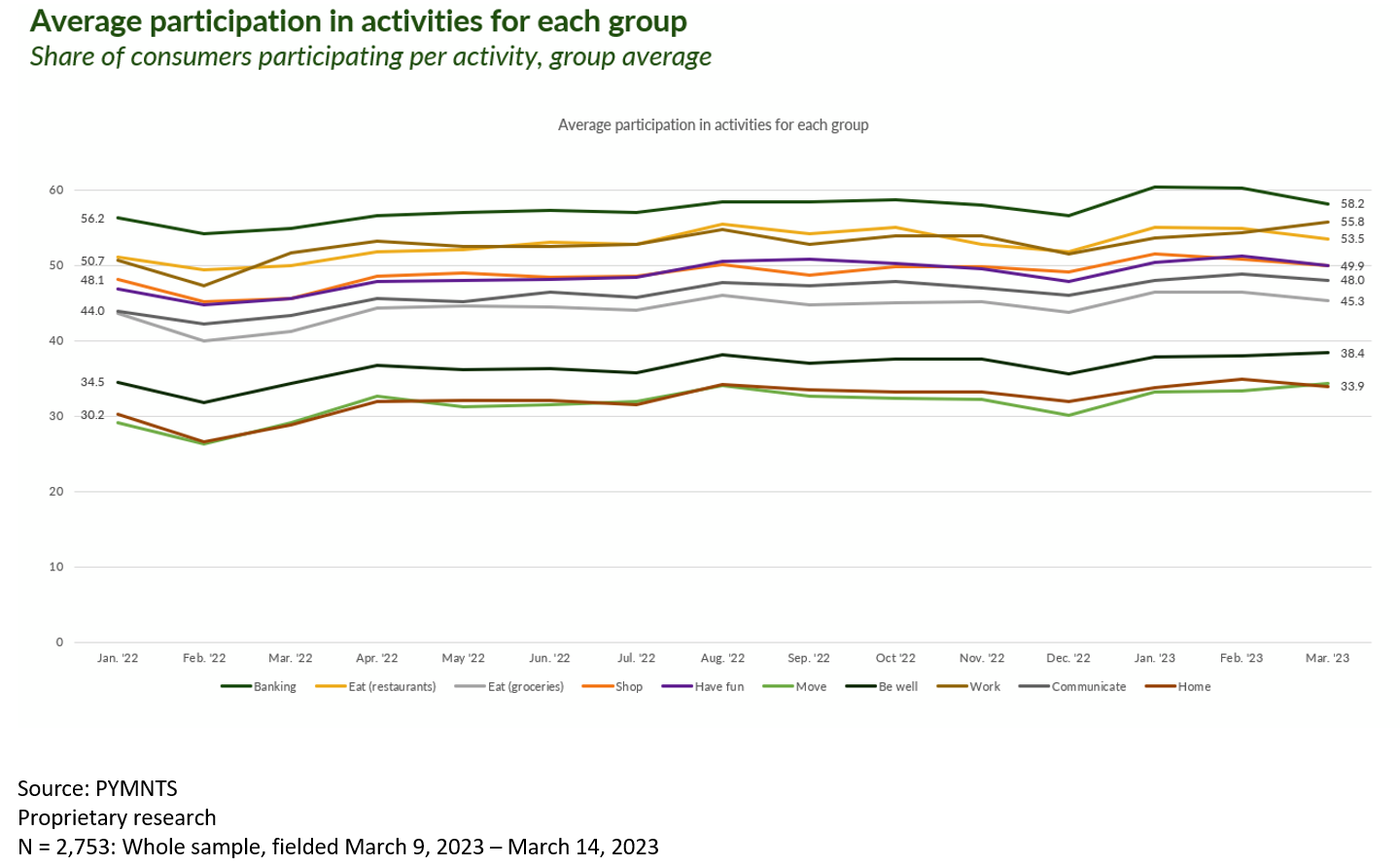Merchants Can Reach Connected Consumers with Shoppable Content
Influenced by the current inflationary cycle, consumers moderate their in-store and online spending for all but the essentials. They have shifted away from transactional activities. Their digital engagement has likewise shifted, as quantified in proprietary research carried out in preparation for PYMNTS’ “ConnectedEconomy™ Monthly Report: The Love and Social Media Edition.”

The report found that overall connectivity is slightly down, with an average participation rate of 47.3% in February and 46.7% in March, driven by a drop in transaction-based activities. That transactional nature is important as consumers continue going online for non-transactional activities such as wellness, communication and having fun.
With consumer behavior currently veering away from strictly transactional platforms, retailers and merchants seeking to increase transaction volume may be challenged in how best to reach their consumer base. Creativity may be key.
One strategy may be to explore shoppable content. The trend, recently gaining more digital steam, is an underexplored avenue for merchants to reach their customers through alternative channels by directly linking to a product through an image or post. Shoppable content may be used by nearly any online retailer, for example, through social media or via “free” content with links embedded directly to products.
Home cooking businesses have been particularly active in exploring this approach and leveraging consumers’ current budget-seeking behaviors, including alternatives to dining out, by linking eGrocery platforms with recipes. In an interview with PYMNTS, president of digital shopper marketing platform Chicory Jason Young explains why home cooking lends itself easily to shoppable content.
“Recipe content has always been incredibly shoppable. What’s happening is, we now have the pipes all connected so that you can go very directly from content like recipes into transactional moments. But if you look at recipes historically, they’ve always been a point of inspiration, a point of kicking off the food shopping process.”
However, shoppable commerce isn’t limited to the eGrocery sector. Of social media platforms, Pinterest has taken the largest initiative in exploring shoppable content as a key revenue source as they invest in machine learning and artificial intelligence. This includes adding shopping capabilities to its collage-making app, Shuffles, allowing users to tap images used in collages to view brand names, prices and similar items.
Pinterest also recently signed a multiyear deal with Amazon to offer more relevant products and ads on its platform. Amazon has dipped into shoppable commerce on its own, releasing late last year “Inspire,” a TikTok-like feature on its app allowing customers to browse a custom photo/video feed to find products.
With no clear answer on the return to an economic normal, consumers may continue to avoid transaction-based digital activities while remaining connected. Retailers and merchants seeking alternative means of broadening their base may consider shoppable content as one avenue for doing so.

